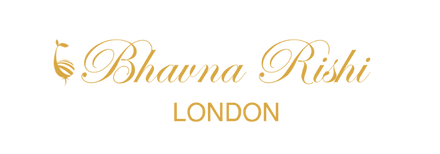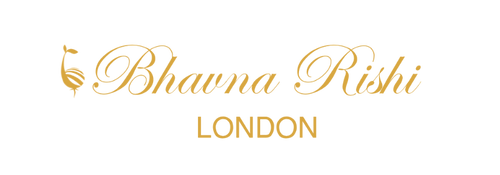How to Go From An Idea to Sample For Your Fashion Business In 2025
Posted by SALES BHAVNA

Creating a fashion sample is a critical step in bringing your clothing line to life. Whether you're an aspiring designer or an entrepreneur launching your first collection, transforming your ideas into a tangible product can feel daunting.
This step-by-step guide will walk you through the process of going from idea to sample in fashion design, using industry best practices and tools to ensure your vision becomes reality.
1. Start with a Clear Vision
Every great fashion piece begins with a well-defined concept. Start by:
- Identifying the problem your idea is going to solve.
- Identifying your target audience: Who will wear your product?
- Understanding your niche: What makes your idea unique in the market?
- Creating a mood board: Use platforms like Pinterest or Adobe Spark to gather inspiration for fabrics, colours, and silhouettes.
- Research similar products and their characteristics and figure out why and how yours will be different.
Our Tip:
Use AI tools like MidJourney or DALL·E to visualise your designs quickly. These tools can generate preliminary sketches or mood boards based on your descriptions.
2. Sketch Your Design
Once you’ve solidified your idea, the next step is to bring it to life through sketching. You don’t need to be a professional artist; rough sketches work as long as they convey the details of your design.
- Include front, back, and side views.
- Highlight specific design features, like zippers, pleats, or pockets.
- Add notes about fabric types, trims, and colours.
Our Tip:
Digital sketching tools like Canva, Procreate or Adobe Illustrator can help you refine your sketches and make them more professional.
3. Create a Tech Pack
A tech pack is a document that contains all the technical details of your design. It serves as the blueprint for your manufacturer or pattern maker.
Include in your tech pack:
- Detailed sketches with measurements
- Fabric type and specifications
- Trims, zippers, buttons, and other embellishments
- Stitching details and seam types
- Pantone color references
Our Tip:
Platforms like Techpacker make it easy to create professional tech packs without extensive design experience. You can hire 3rd party services on Upwork or Fiver to create your print files and tech pack from your inspos.
4. Choose the Right Fabrics and Materials
Selecting the right materials is crucial to achieving the desired look and feel of your design. Visit fabric markets, trade shows or work with trusted suppliers to source samples of:
- Main fabrics (e.g., cotton, silk, or denim)
- Lining fabrics
- Trims, buttons, or zippers
Our Tip:
Sustainability is a growing trend in fashion. Consider eco-friendly fabrics like organic cotton or recycled polyester to appeal to conscious consumers. Ask for certifications to ensure that the materials are certified.
5. Find a Skilled Pattern Maker
A pattern maker translates your design into a pattern that can be used to cut and sew your sample. Their expertise ensures your design fits correctly and looks polished.
Look for pattern makers on social media and google with experience in your niche (e.g., streetwear, eveningwear) and check their portfolio for similar projects.

6. Create Your First Prototype (Toile)
A toile is a basic version of your design made using inexpensive fabrics, like muslin. It allows you to test the fit and design before using the final fabric.

Steps:
- Have your pattern maker cut and sew the toile.
- Review the fit and overall design.
- Make adjustments based on the results.
- Test this with focus groups, friends and family to see the fit!
7. Collaborate with a Reliable Manufacturer
Once your pattern is finalised, it’s time to produce the actual sample using your chosen fabric. Partner with a manufacturer who specializes in your product type.
What to Look For:
- Experience with similar projects
- Minimum order quantities (MOQ) that match your needs
- Clear communication and transparency
- Prepare Supplier Agreement and NDA
Our Tip:
Use platforms like Maker’s Row or Sewport to find reputable manufacturers.
8. Review and Refine the Sample
After receiving your sample, thoroughly inspect it for:
- Fit and comfort
- Quality of stitching and finishing
- Alignment with your design vision
If adjustments are needed, communicate changes clearly with your manufacturer and request a revised sample.

Our Tip:
9. Test Your Sample with Your Target Audience
Before moving into full production, get feedback on your sample from potential customers, industry experts, or focus groups. This ensures your design resonates with your target audience.
Ways to gather feedback:
- Host a small showcase or pop-up event.
- Share your sample on social media to gauge interest.
- Collaborate with influencers or stylists for honest reviews.

Our Tip:
- Record the comments and feedback
- Use this for your content or story for social media
10. Prepare for Production
Once you’ve finalised your sample, you’re ready for production. Work closely with your manufacturer to set timelines, review quality control processes, and ensure a smooth transition from sample to finished product.

Finally,
Turning your fashion idea into a sample is a multi-step process that requires creativity, precision, and collaboration. By following this guide, you’ll not only save time and money but also set the foundation for a successful clothing line.
Ready to take your fashion idea to the next level?
Let’s make it happen! Reach out for expert guidance on turning your concepts into reality. Book a call here!

BuildtheDreamBrand,
The Right way!






